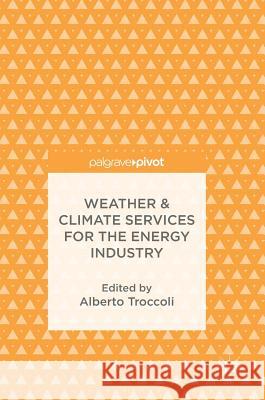Weather & Climate Services for the Energy Industry » książka
topmenu
Weather & Climate Services for the Energy Industry
ISBN-13: 9783319684178 / Angielski / Twarda / 2018 / 197 str.
Kategorie:
Kategorie BISAC:
Wydawca:
Palgrave MacMillan
Język:
Angielski
ISBN-13:
9783319684178
Rok wydania:
2018
Wydanie:
2018
Ilość stron:
197
Waga:
0.42 kg
Wymiary:
21.01 x 14.81 x 1.42
Oprawa:
Twarda
Wolumenów:
01
Dodatkowe informacje:
Wydanie ilustrowane











